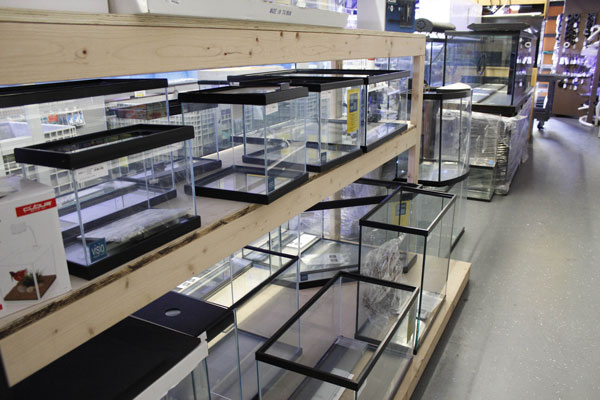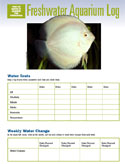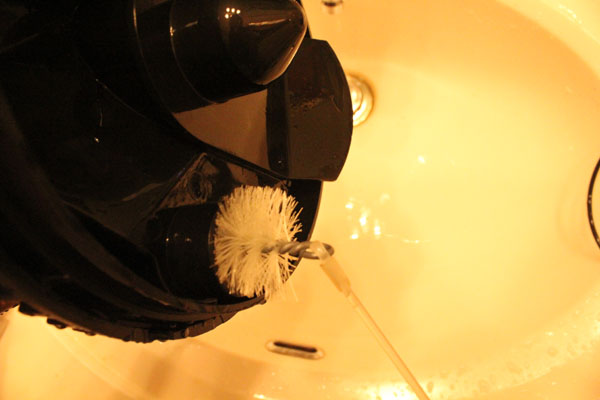
First off, though, what exactly is an invasive species?
Several terms are thrown around that are similar to, "invasive species,” and are sometimes used interchangeably. The most common of these are "exotic species” and "nonnative species,” however there is a fine line between these two terms and the term "invasive species.”
An exotic species or nonnative species is any species that is found outside of its natural range (in the wild). Typically, in order to be notable, this species has to have established a breeding population. However, provided the population remains low, they are not generally invasive. An invasive species takes this one step further. An invasive species is any species having a large, disruptive effect on the local environment, typically as a result of a large population boom.
To illustrate this point, I typically cite the example of the Japanese maple tree. If I plant a Japanese maple tree in my front yard, this is an exotic species. But, it’s not an invasive species. The same can be said of many fishes. Every year, I hear a news report of someone who catches a piranha in local waters (though it’s usually a pacu). This is not an invasive species, it’s merely an exotic species.
An interesting note is that the definition of invasive species does not include any mention of where a species originated. Most invasive species are transplanted a great distance, but not all. One "local” invasive species that some pondkeepers may have had experience with is the Canada goose. Due to a reduction in predators, including hunting by humans, coupled with increased habitat in the form of suburban ponds, the Canada goose population across North America has exploded. These birds destroy small wetlands and lawns, and greatly pollute both natural and artificial ponds. As a result of the habitat disruption, they have been deemed invasive.
The bulk of invasive species, however, are introduced from elsewhere – hence the term "invasive.” An invasion follows a set path. The first step is introduction.
Introduction is when a species is first introduced into the wild. It can be a very small number – as little as a single breeding pair. Introductions can occur in several forms, the most insidious of which is purposeful. In a purposeful introduction, someone releases a species into the wild. This can be done either naively or with the intent of establishing a breeding population. A naïve introduction is when someone releases organisms with the hopes that they'll simply have a happy life – no thought is given to the possibility of establishing a breeding population. Purposeful introductions are often done by government agencies, although occasionally private individuals will release fishes (for example, many livebearers have been released by those hoping to harvest them later for profit – a doubly stupid idea because catching them is quite time consuming and nets little profit).
Introductions can also happen when organisms get released accidentally or escape. Storms can move fishes around – including from fish farms, or even aquariums! Boats often move plants and even animals from one body of water to another, without intending to.
This is where most introductions fail. Perhaps the released organisms will be eaten by another, perhaps they will never find mates, perhaps an unusually cold, warm, dry, wet, season occurs and they die. If, however, they continue to breed, they may reach a point of establishment. Once a species is established, it has reached the point where minor population disruptions, such as a bad year, will not wipe them out and only a purposeful campaign can do so. However, at this stage they're not yet invasive – they're simply "there” and breeding. This is the stage the northern snakehead has reached in the Potomac Drainage. As of yet, we haven't noticed any real damage from these fish, but they're definitely here and in good numbers.
At this point, one of three things can happen. Something severe could come along and wipe out the established population. Or, the population could continue to breed, but not at high enough numbers to upset anything. This is called naturalization, and it does occur sometimes. Most typically, this occurs when the new habitat is not really all that different from the old habitat, such as when a game fish is moved from one watershed to another. They find food, they have predators, it’s really the same, just a different background. The most commonly cited example of this is the dandelion plant. It was brought over from Europe to North America at some point, and has become such an established, natural part of our ecosystem that it seems like it’s been here forever. Trout are an aquatic example, they're moved by fisheries all the time, and their damage is minimal.
At some point, a breeding population reaches a critical mass level and the population explodes. No one quite understands exactly how a species goes from established to invasive, but they do. It can happen after years and years of being established, or it can happen suddenly. At some point, however, the species stops merely occurring and starts to dominate a landscape. Theories abound as to why a species will suddenly explode in population, and the reason differs with each case. Perhaps there were just finally enough of them to breed exponentially, perhaps a predator was removed from the scene, or perhaps it was a slow year for a competitor. In some cases, the introduction of another species may enable the first to take off.
Invasive species can cause problems. The most obvious being the reduction of populations of native species. In many cases, an invasive species is able to out-compete native species for resources; food, space, light, and water. In others, it simply eats a native species. Some invasive species can spread diseases. Others can hybridize with native species, destroying a population. Invasive species may also deprive other species of food. If an invasive species out-competes a prey item, but is not itself edible, it may cause predator species to decline. Additionally, many invasive species greatly disrupt the local environment by destroying or modifying the habitat.
In part two, we'll look at specific examples of invasive species and how they relate to the aquarium hobby, and address species invading many different regions of North America and beyond.
 Five Tips for Freshwater Aquarium Success
You spent countless hours researching the latest products to
Five Tips for Freshwater Aquarium Success
You spent countless hours researching the latest products to
 Would You Like The Supreme Fishing Experience? Heres The Reason Why It Is Essential To Carry The Mo
If what youre seeking out is considerably more fish thr
Would You Like The Supreme Fishing Experience? Heres The Reason Why It Is Essential To Carry The Mo
If what youre seeking out is considerably more fish thr
 Aquarium maintenance logs for freshwater, saltwater and reefkeeping aquarists
Thank you for signing up for the FishChannel newsletter, the
Aquarium maintenance logs for freshwater, saltwater and reefkeeping aquarists
Thank you for signing up for the FishChannel newsletter, the
 Reefdoser Pro for iPad Ships
Reefdoser Pro for iPad Ships
 How to Maintain Your Aquarium Filter
Aquarium filtration saw monumental advances in technology du
How to Maintain Your Aquarium Filter
Aquarium filtration saw monumental advances in technology du
Copyright © 2005-2016 Pet Information All Rights Reserved
Contact us: www162date@outlook.com